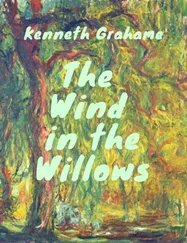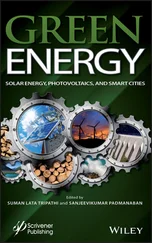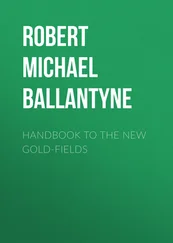The model parameters a i, b jcan be estimated in various ways. A useful technique is the method of recursive least squares, or RLS (Ljung and Söderström 1983). Estimates of the model parameters are updated on each timestep in such a way as to minimise the expected value of the sum of squares of the prediction errors. By including a so‐called ‘forgetting factor’, the influence of older observations can be progressively reduced, leading to an adaptive estimation of the parameters, which will gradually change to accommodate variations in the statistical properties of the variable y .
Bossanyi (1985) investigated the use of ARMA models for wind speed predictions from a few seconds to a few minutes ahead, obtaining reductions in root mean square (rms) prediction errors of up to 20% when compared to a persistence forecast. The best results were obtained when predicting 10 minutes ahead from 1‐minute data.
Kariniotakis et al. (1997) compare ARMA methods against a selection of more recent techniques such as neural network, fuzzy logic, and wavelet‐based methods. The fuzzy logic method is tentatively selected as giving the best predictions over periods of 10 minutes to 2 hours, with improvements of 10–18% compared to persistence.
Nielsen and Madsen (1999) use an ARX model with RLS to predict wind farm power output based on previous values of power output, and measured wind speed as an exogenous variable, supplemented by a function describing the diurnal variations of wind speed and by meteorological forecasts of wind speed and direction. Predictions up to 48 hours ahead are considered, and the inclusion of meteorological forecasts is shown to improve the predictions significantly, especially for the longer period forecasts.
2.9.2 Meteorological methods
As indicated in the previous section, much better predictions can be made by using meteorological forecasts than by using purely statistical methods, when predictions over timescales of a few hours or days are considered. Very sophisticated meteorological forecasts are available from highly detailed simulation models of the atmosphere, fed by many recorded observations of pressure, temperature, wind speed, etc. over wide areas of land and sea.
Landberg (1997, 1999) describes the use of such models to predict wind farm output, by extrapolating the large‐scale wind predictions produced by these models down to the specific wind farm site. The geostrophic drag law and the logarithmic wind shear profile ( Section 2.6.2) are used to extrapolate the wind forecasts down to ground level. Modifications to the flow resulting from the topography, the physical geography, and surface roughness conditions in the area surrounding the wind farm are then modelled by the WA sP program (Mortensen et al. 1993). A turbine wake interaction model, PARK (Sanderhoff 1993), then takes account of wind direction in relation to the actual turbine positions to calculate wake losses, and, finally, a statistical model (as described in the previous section) combines the meteorological forecasts with recent measurements on the wind farm to give predictions of the energy output that are good enough to be useful in planning the deployment of other power stations on the network.
In recent years, wind power forecasting has become very important economically. Wind plant operators have to predict their output as accurately as possible, from a quarter or half an hour ahead to 24 or 48 hours, depending on the marketing arrangements for the power produced. There may be financial penalties for under‐ or overproducing. As well as the actual forecast, an estimate of the reliability of each forecast helps the operator to decide how much power to promise in forthcoming periods. Consequently, increasingly sophisticated methods are now being used, with combinations of meteorological forecasts, often from more than one source, together with statistical methods including machine learning and ensemble averaging to weight the results of different methods and estimate the forecasting uncertainties. Forecasting has become a major topic in its own right, and is covered in more detail in Section 11.6.3.
2.10 Turbulence in complex terrain
Predicting the turbulence intensity and spectrum at a given point within an area of complex terrain is not straightforward. Hilly terrain upwind of the site in question will lead to generally higher turbulence levels, and some authors have suggested that this can be calculated from a ‘regional roughness length’ that takes the topography into account as well as the surface roughness (Tieleman 1992). On the other hand, distortion of the flow by the local terrain may reduce the turbulence intensity. At heights above ground that are of importance for wind turbines, rapid distortion theory applies, which means that the variance of the turbulent fluctuations will not change much as the flow passes over terrain features such as hills. Therefore if there is acceleration of the flow as it passes over a hill, the turbulence intensity will decrease, and the length scale will increase, resulting in a shift of the turbulence spectrum towards lower frequencies, without any change of shape (Schlez 2000). This effect is therefore easily estimated once a model such as WA SP has been used to calculate the speed‐up factor at a particular point. However, the effect is also accompanied by a shift of turbulent energy from the longitudinal to the lateral and vertical components of turbulence, causing the turbulence on hill tops to be more isotropic (Petersen et al. 1998).
1 Bossanyi, E.A., (1985). Short‐term stochastic wind prediction and possible control applications. Proceedings of the Delphi Workshop on Wind Energy Applications (May 1985).
2 Cook, N.J. (1982). Towards a better estimation of extreme wind speeds. J. Wind Eng. Ind. Aerodyn. 9: 295–323.
3 Cook, N.J. (1985). The Designer's Guide to Wind Loading of Building Structures, Part 1. Oxford: Butterworth‐Heinemann.
4 DS 472 (1992): Code of practice for loads and safety of wind turbine constructions. Copenhagen: Danish Standards Foundation.
5 ESDU (1975). Characteristics of atmospheric turbulence near the ground. Part III: Variations in space and time for strong winds (neutral atmosphere). ESDU 75001, Engineering Sciences Data Unit.
6 ESDU (1983). Strong winds in the atmospheric boundary layer. Part 2: Discrete gust speeds. ESDU 83045, Engineering Sciences Data Unit.
7 ESDU (1985). Characteristics of atmospheric turbulence near the ground. Part II: Single point data for strong winds (neutral atmosphere). ESDU 85020, Engineering Sciences Data Unit (amended 1993).
8 EN‐1991‐1‐4:2005 (2005). Eurocode 1: Actions on structures – Part 1‐4: General actions – Wind actions. Brussels: European Committee for Standardization.
9 Fisher, R.A. and Tippett, L.H.C. (1928). Limiting forms of the frequency distribution of the largest or smallest member of a sample. Proc. Cambridge Philosophical Society 24: 180–190.
10 Germanischer Lloyd (GL) (1993). Rules and regulations IV – Non‐marine technology, Part 1 – Wind Energy (supplemented 1994, 1998).
11 Germanischer Lloyd (GL) (2003). Rules and guidelines IV – Industrial services, 1 – Guideline for the certification of wind turbines, edition 2003 with supplement 2004.
12 Greenway, M.E. (1979). An analytical approach to wind velocity gust factors. J. Wind Eng. Ind. Aerodyn. 5: 61–91.
13 Gumbel, E.J. (1958). Statistics of Extremes. New York: Columbia University Press.
14 Harris, R.I. (1990). Some further thoughts on the spectrum of gustiness in strong winds. J. Wind Eng. Ind. Aerodyn. 33: 461–477.
15 IEC 61400‐1 (1999). Wind turbine generator systems – Part 1: Safety requirements (2nd edition), International Standard 61400‐1 edition 2.
Читать дальше












